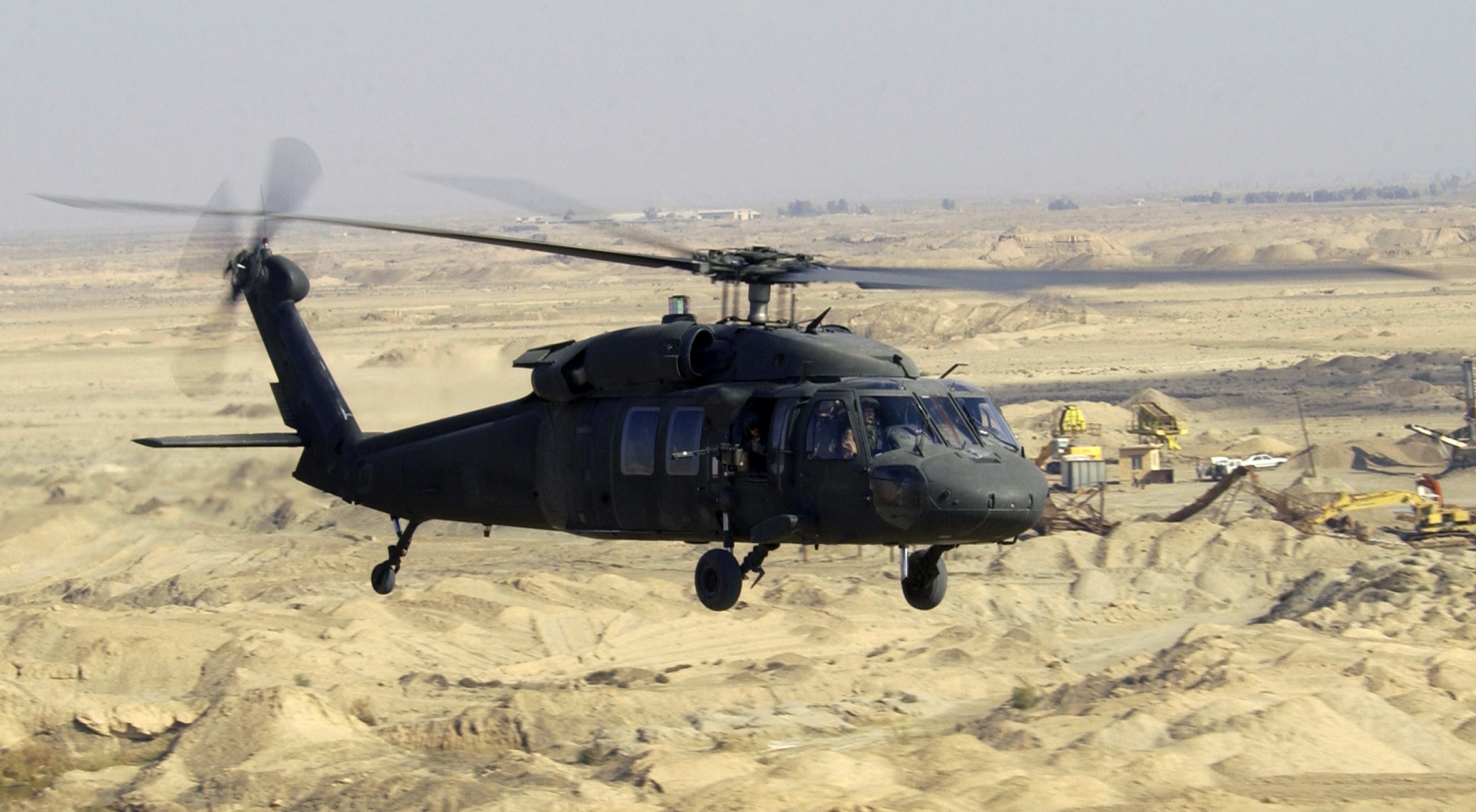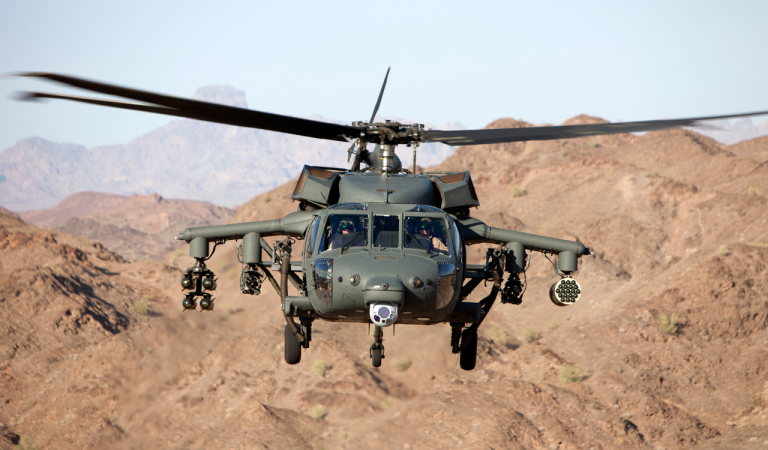Checking out the Convenience of the UH 60 in Numerous Military and Civilian Roles
Checking out the Convenience of the UH 60 in Numerous Military and Civilian Roles
Blog Article
UH-60: Developments in Modern Helicopter Design
The UH-60 helicopter stands as a benchmark in modern aviation, showcasing considerable improvements in layout and innovation that provide to the developing demands of military procedures. As we discover the evolution and crucial advancements of the UH-60, it becomes important to take into consideration how these growths influence not just present applications however likewise the future landscape of helicopter layout.

Evolution of the UH-60
The development of the UH-60 Black Hawk helicopter represents a substantial turning point in aerospace design and military aviation. Introduced in the late 1970s, the UH-60 was made by Sikorsky Aircraft to meet the United States Military's demand for a versatile energy helicopter efficient in executing a selection of missions. Its design emphasized resilience, rate, and ability to move, setting brand-new criteria for operational performance.
The UH-60 includes an unique four-blade blades system, which enhances lift and security, allowing it to operate successfully in varied atmospheres. Its airframe is built from sophisticated composite materials, contributing to a decrease in weight while keeping structural stability. The helicopter's layout likewise integrates improved aerodynamics, which improves gas efficiency and raises array.
For many years, the Black Hawk has undergone several upgrades to enhance its capacities, consisting of enhanced engines, progressed flight control systems, and modular systems for simple maintenance and versatility. The helicopter's capacity to do goals ranging from army transport to medical emptying has strengthened its function as a foundation of U.S. armed forces operations. The UH-60 Black Hawk stays a prime instance of exactly how innovation in helicopter style can significantly influence armed forces efficiency and operational flexibility.
Advanced Avionics Equipments
Advancements in avionics systems have actually transformed the capacities of modern helicopters like the UH-60 Black Hawk, enhancing functional efficiency and situational awareness (UH 60). The combination of advanced avionics enables improved trip, navigating, and communication monitoring, making the UH-60 much more versatile in diverse objective accounts
Among the vital functions is the sophisticated electronic cockpit, which employs multifunction display screens that offer real-time data, ensuring pilots have immediate access to important flight information. This streamlining of details decreases pilot workload and boosts decision-making procedures throughout facility operations. In addition, the incorporation of general practitioner and inertial navigating systems allows exact positioning and route preparation, improving goal execution in challenging environments.
Moreover, progressed avionics systems enhance communication capabilities through safe information links and voice communication systems, enabling smooth coordination with ground forces and other aircraft. The combination of automatic trip control systems additionally adds to boosted stability and control, specifically in adverse climate problems or during low-altitude maneuvers.
Engine and Efficiency Enhancements
Engine efficiency in contemporary helicopters has taken a considerable leap ahead, driven by innovations that enhance effectiveness, reliability, and power. At the center of these advancements is the fostering of even more effective turboshaft engines, specifically those using innovative products and innovations that enable greater temperature level resistances and get redirected here raised drive capabilities. The UH-60 Black Hawk, for instance, utilizes the T700-GE-701C engine, which includes a dual-channel, full-authority digital engine control system. This system improves performance while maximizing fuel consumption and reducing upkeep requirements.
Additionally, the combination of engine health tracking systems allows for real-time diagnostics and anticipating maintenance, considerably enhancing operational integrity. These systems not just sharp crews to prospective problems prior to they end up being critical yet likewise facilitate extra effective upkeep organizing, thus lowering downtime.

Products and Structural Innovations
Current developments in materials and structural layout have actually revolutionized modern helicopter building, enhancing both efficiency and toughness. The introduction of innovative composite materials, such as carbon fiber reinforced polymers, has actually significantly reduced weight while maintaining structural integrity. This shift not just boosts gas performance yet also raises payload capacity, permitting helicopters like the UH-60 to perform even more diverse objectives.
In addition, innovations in aluminum alloys and titanium elements have actually added to enhanced resistance to rust and fatigue, extending the lifespan of critical airframe components. The strategic use these products has actually resulted in a decrease in upkeep requirements and enhanced general functional preparedness.

Moreover, the integration of computer-aided layout (CAD) and additive production modern technologies has made a fantastic read it possible for a lot more light-weight structures and complex geometries, enhancing the aerodynamic performance of helicopter styles. These advancements promote quick prototyping and production, permitting makers to respond swiftly to advancing goal requirements.
Safety and Survivability Attributes
Security and survivability attributes in modern helicopter design have come to be extremely important, reflecting the increasing demands for objective efficiency in difficult atmospheres. The UH-60 Black Hawk, a notable instance, integrates innovative modern technologies to improve crew and passenger security.
The helicopter likewise uses a ballistic defense system, which consists of armored team seats and crucial systems protecting, decreasing susceptability to tiny arms fire and shrapnel. Enhanced situational understanding is achieved with innovative avionics and sensing unit innovations, permitting pilots to discover and prevent threats properly.
Additionally, the combination of redundancy in critical systems-- such as twin engines and several trip control channels-- makes sure continued operation even if one system fails. The UH-60 is equipped with advanced emergency situation flotation gadgets, enhancing survivability in water landings. Collectively, these functions not only improve the security of personnel however additionally raise mission success rates in hostile atmospheres, showing the dedication to quality in helicopter layout.
Verdict
The Recommended Site UH-60 helicopter represents a substantial innovation in modern air travel modern technology, incorporating cutting-edge materials, innovative avionics, and robust safety functions. On the whole, the UH-60 serves as a benchmark for future developments in helicopter layout, personifying resilience and versatility in contemporary army procedures.
The UH-60 helicopter stands as a benchmark in modern aeronautics, showcasing considerable innovations in layout and modern technology that provide to the evolving demands of armed forces operations. As we discover the evolution and essential developments of the UH-60, it becomes vital to think about exactly how these growths affect not just existing applications yet likewise the future landscape of helicopter layout.
Presented in the late 1970s, the UH-60 was made by Sikorsky Aircraft to satisfy the United States Army's demand for a versatile utility helicopter capable of carrying out a variety of missions. The UH-60 Black Hawk continues to be a prime example of just how innovation in helicopter style can dramatically impact military efficiency and operational adaptability.
Overall, the UH-60 serves as a standard for future advancements in helicopter layout, personifying strength and versatility in contemporary military operations.
Report this page